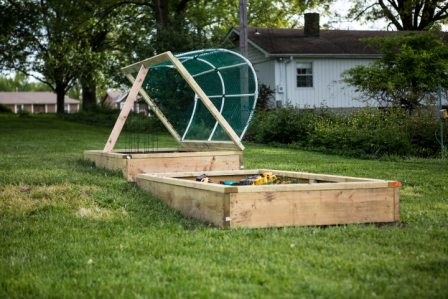
If you have never used a raised garden they are a great addition to an existing garden. They also offer gardeners with arthritis or issues with knees the opportunity to garden without having to bend all the way down. There are in fact 2 types of raised garden beds: ones that are built on the existing ground and ones that are built on a pedestal system, elevating the garden bed over the grounds. Raised garden beds have been popular in the Southern US for quite some time. They were designed to be used in clay rich soil of the South as a way to allow for growing of vegetables and later took on the decorative aspects we see today.
Benefits of Raised Garden Beds for Gardeners
Most garden beds are designed to allow easy access from all sides so the gardener does not have to stand in the garden bed itself. This reduces soil compaction, which makes it easier for plants to receive nutrients. It also means that gardeners can sit on a stool or bench to do their weeding and planting, instead of having to kneel on the ground, which can cause back problems or make existing back and knee problems worse. Raised garden beds offer an attractive and elegant addition to gardens and landscapes. The use and designs on the market today allow for angles and shapes that natural wood can not duplicate.
Building a garden bed is actually a very simple project, but before starting one the builder should consider what will be planted in the garden. If it a flower garden most materials are acceptable. If the garden will be for herbs or vegetables that will be eaten by the gardener you might want to consider what the structure will be made from. The use of pressure treated woods or some plastics may leach carcinogens into the soil which can eventually make their way into the root system of the plants and into the very vegetable or herb you are growing. There are many pre-fabricated kits on the market today in all shapes and sizes. They are more costly but they are also much simpler to assemble.
Raised garden beds are easy to fertilize, water, and mulch due to the size and design. This translates into more efficient gardens. They also tend to use less water and fertilizer due to the set-up. When the garden bed is being filled in, unlike with Mother Nature, you decide what to place within the frame. This should start with mulch, or moisture absorbing materials to help seal in the water, followed by organic soil, if it will be an organic garden. Think of the raised garden bed as very large planter.
Gardening Benefits of Raised Beds
Because the soil warms more quickly in a raised bed garden the growing season tends to be longer than if you planted directly into the ground. The reduced compaction of the soil and the warmth of the bed make it possible for plants to grow earlier in the spring and later in the fall. Because the soil is less compact in a raised garden bed, plants can be placed closer together. This all works together allowing for increased production when compared to a conventional garden.
Water also drains more efficiently from a raised garden bed which protects your plants from becoming over watered or saturated. The structure of the garden bed also holds in nutrients, making plants healthier and more resistant to disease.
You can visit Samantha Michaels’ blog at Greenproductsusa.blogspot.com.
Related Articles & Free Email Newsletter
A Secret Bed Building and Potting Soil Recipe
Five Ways to Make Help Nature Make Topsoil




Comment here